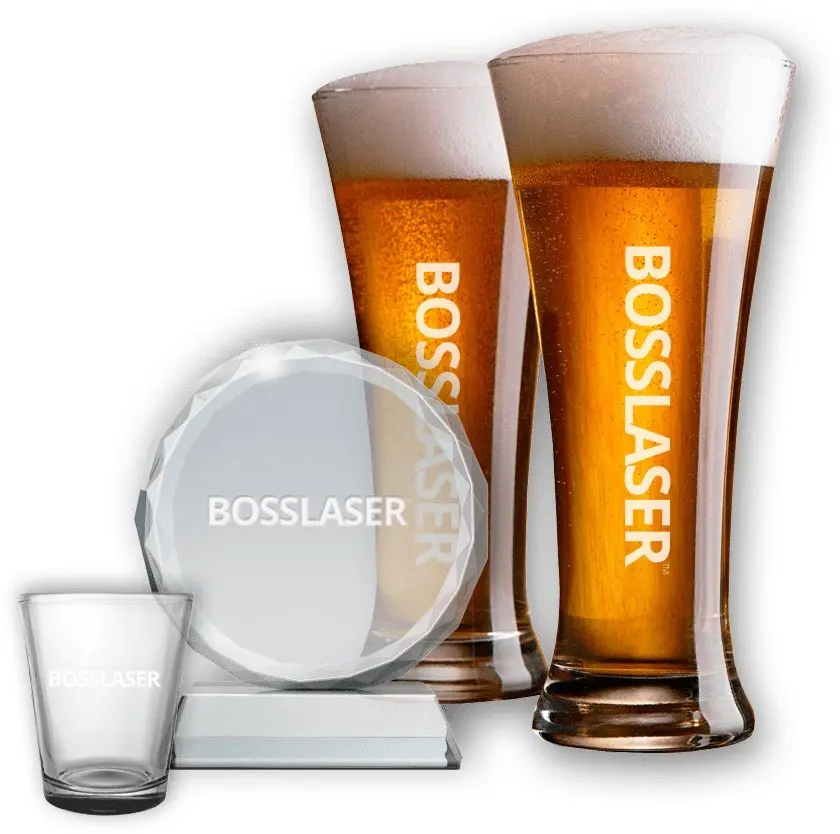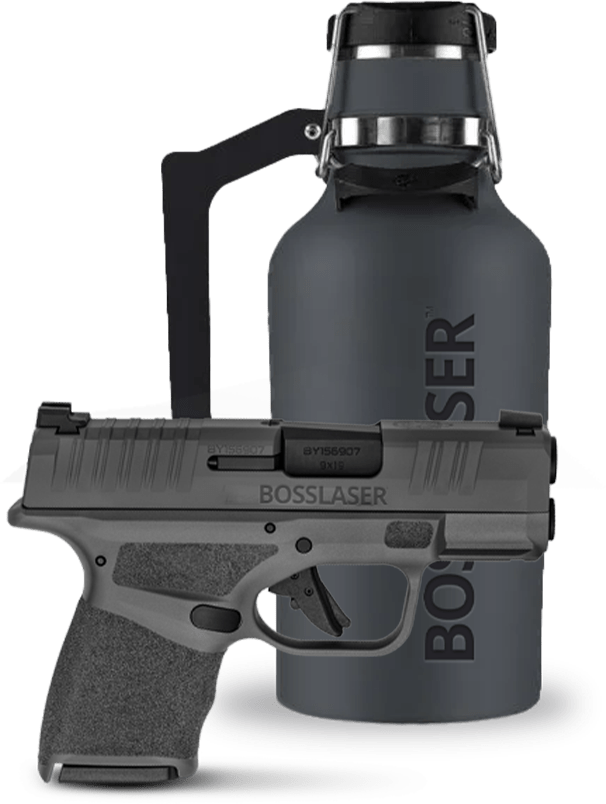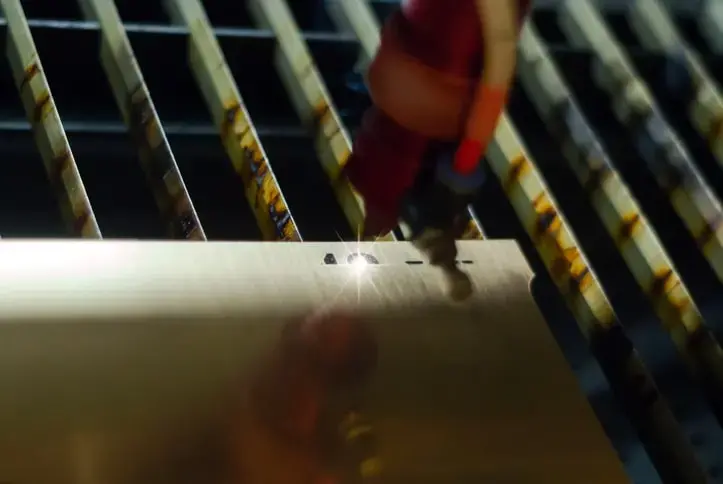Laser etching and laser engraving are often used interchangeably, but they refer to a distinct laser process that yields a unique result. Both techniques have advantages and disadvantages, making it crucial to understand their differences to determine which is best suited for your specific laser application. In this post, we will dive into the intricacies of laser etching versus laser engraving, exploring their applications, advantages, disadvantages, and the materials they can be used on…
Is Laser Etching the Same as Laser Engraving?
Laser etching and laser engraving may sound similar, but the laser process differ significantly in both speed and the finished result. The key distinction lies in the way the material is transformed. Laser etching often uses less power or more speed and results in melting the material’s surface. Whereas laser engraving vaporizes and removes material producing a more pronounced, deeper and durable finish.
In laser etching, the laser beam heats the material’s surface layer, causing it to melt and expand. Once the surface cools, a permanent design is created. Due to the precision of the laser beam, this process is ideal for thin surfaces and delicate objects.
On the other hand, laser engraving involves vaporizing the material’s surface, creating a cavity that results in a visible design. The marks produced by laser engraving are deeper and more durable than those created by laser etching. Laser engraving is commonly used for thicker materials that require long-lasting and wear-resistant designs.
Advantages and Disadvantages of Laser Etching
Advantages of Laser Etching
- Precision: Laser etching provides extremely precise results, making it suitable for designs with small details, such as jewelry.
- Speed: The laser etching process is quick, making it beneficial for mass-producing items or meeting tight deadlines.
- Versatility: Laser etching can be performed on a wide range of materials, including metals, paper, wood, some acrylics, and glass etching.
- Suitable for thick and thin materials: Laser etching can identify thick metal parts for industrial applications or inscribe fine artistic designs.
- Ideal for mass production: Laser etching offers durable results that are quick and efficient, making it a preferred choice for large-scale production.
- Cost-effective: Laser etching requires less power, resulting in lower running costs.

Disadvantages of Laser Etching
- Less durability: Laser-etched markings are less resistant to wear and tear than laser-engraved ones.
- Limited to fiber laser machines: Laser etching can only be achieved using a fiber laser machine, which may limit its availability in smaller metal fabrication workshops.
What Materials Can Be Used for a Laser Etching Machine?
A laser etching machine is commonly used on metals such as aluminum, anodized aluminum, lead, magnesium, steel, stainless steel, and zinc. Plated, anodized, and bare metallic surfaces are all suitable for laser etching. Some non-metallic materials like glass etching, polymers, and ceramics can also be laser etched. It is important to consult a laser etching expert to determine the suitability of a specific material for the process.
Advantages and Disadvantages of Laser Engraving
Advantages of Laser Engraving
- Tactile and visually discernible: Laser engraving creates cavity-like engravings that can be felt and seen, adding a tactile dimension to the design.
- Deep and 3D designs: Laser engraving can achieve deeper and more invasive designs, creating precise 3D forms.
- Durability: Laser-engraved designs are more wear-resistant and age-resistant, making them ideal for harsh conditions.
- Efficient for mass production: Laser engraving is a practical choice for mass-produced components.
- Suitable for various materials: Laser engraving can be performed on metals like stainless steel, brass, and titanium, as well as other materials like wood, glass, and plastic.
- Engravings maintain readability: Laser engraving is preferred for 2D codes that must maintain high readability even after post-process treatments.

Disadvantages of Laser Engraving
- Limited range of applications: Laser engraving is less versatile than etching and is primarily used for stainless steel and other metals. However, some varieties of wood, glass, and plastic can also be engraved using lasers.
- Less resource-efficient: Vaporization in the engraving process makes it less efficient for large-scale production than a laser etching machine.
- Longer process and higher energy consumption: Engraving requires a higher-intensity laser and a longer time frame, particularly for metals like stainless steel.
What Materials Can Be Laser Engraved?
Laser engraving is commonly used on metals, including stainless steel, aluminum, brass, and cold rolled steel. Before engraving, a coating or pigment may need to be applied to the material. Apart from metals, laser engraving can be performed on materials like tiles, fiberglass, wood, and paper. The choice of laser engraving machine depends on the specific material being engraved.
Etching vs Engraving: Which is More Durable?
When it comes to durability, laser engraving surpasses laser etching. Laser engraving creates deep and permanent designs that can withstand wear and tear in harsh conditions. The deeply carved patterns are more long-lasting and resistant to damage. In contrast, laser-etched markings are relatively fragile and can be easily obscured by dirt or paint. While laser etching may last up to 5 or 10 years, laser engraving offers greater durability, making it the preferred choice for applications that require longevity.
Etching vs Engraving: Which is More Expensive?
Generally, laser engraving is more expensive than laser etching. Laser engraving requires more time and more powerful technology compared to etching. However, the cost difference between the two processes can vary based on factors such as the material being marked, the size and depth of the design, and the production volume. Harder materials and more complex designs may increase the cost of etching and engraving processes.
Etching vs Engraving: Which is Best for Metal?
Both a laser etching machine and a laser engraving machine can be used on metal objects and surfaces, but the ideal choice depends on the specific project requirements. Laser etching is commonly used for marking metals in various industries due to its efficiency and cost-effectiveness. It is suitable for identifying thick metal parts or creating fine artistic designs. Laser engraving, on the other hand, is preferred for objects requiring high durability and wear and tear resistance. It is often used in the aerospace, automotive, transportation, and energy industries.
Laser Etching vs Laser Engraving: What Are They Used For?
Both laser etching and laser engraving have diverse applications, ranging from artistic work to heavy industries. Laser etching is commonly used for barcodes, logos, serial numbers, and data matrix codes, while laser engraving is favored for deep and long-lasting engravings. The choice between the two techniques depends on the level of wear the marked part will be exposed to and the desired permanence of the design. Laser etching is suitable for light commercial purposes, while laser engraving is commonly used in heavy industries.
Does Laser Etching Wear Off?
Laser etching is theoretically permanent, but its readability and visibility can be affected by wear and tear. Laser etching does not add any material to the surface; instead, it melts the surface to create the marking. While laser-engraved markings are more resistant to wear, laser-etched markings may be obscured over time by heavy use or the accumulation of dirt and paint.
Contact Boss Laser for Your Laser Engraving Machine
Laser etching and laser engraving are distinct techniques with their advantages and disadvantages. Laser etching provides precise and cost-effective results, ideal for thin surfaces and delicate objects. On the other hand, laser engraving offers deeper and more durable designs, making it suitable for applications requiring longevity and wear and tear resistance. The choice between the two techniques depends on the material being marked, the desired durability, and the specific project requirements. Contact our team today to learn more about our laser engraving machines and how you can create your own business with Boss Laser.
